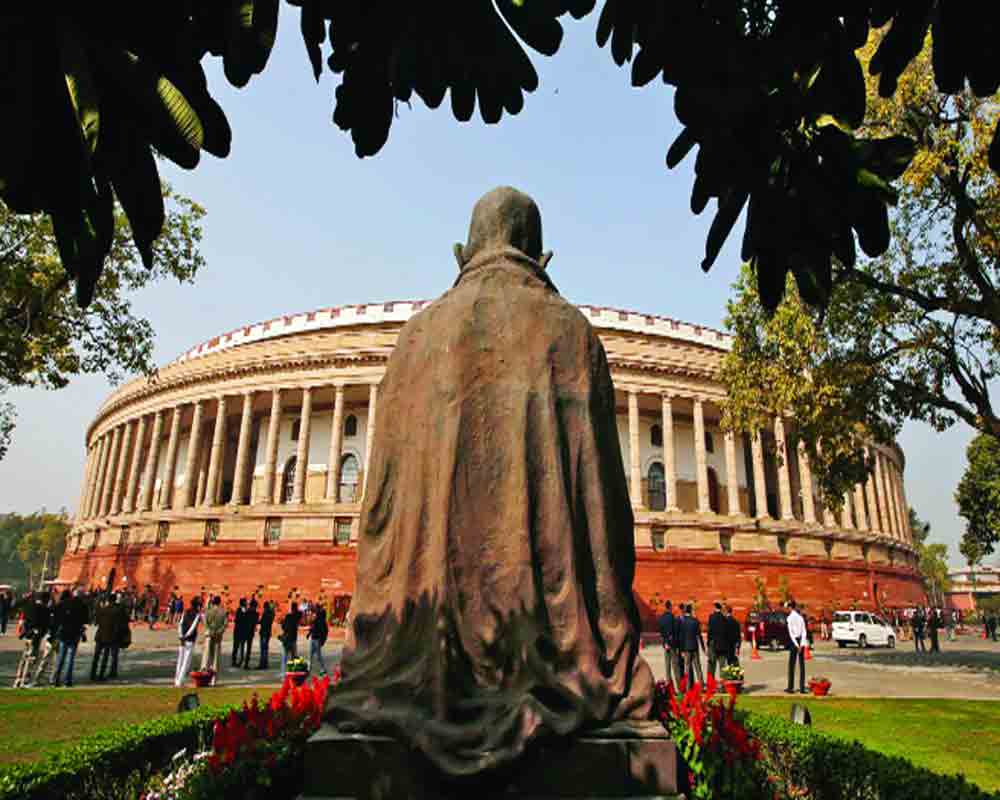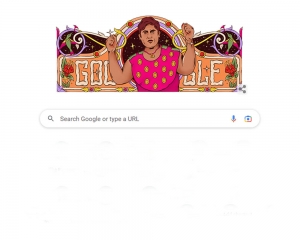It was on 26th November 1949 that the Constitution was passed by the Constituent Assembly which met for 2 years, 11 months and 17 days
On 26 Nov. when we have celebrated it as Constitution Day, the reminisces of constitutional history float in the mind. Breaking the adamantine shackles of slavery, India became an independent nation on 15th August 1947 and a sovereign democratic republic on 26th January 1950 with the coming into force of the Constitution of the sovereign democratic republic of India. But it was on 26th Nov. 1949 that the Constitution was passed by the Constituent Assembly (CA) which met for 2 years, 11 months and 17 days.
Democracy presupposes ‘Rule of law’ and the Constitution is the supreme Lex of the land and also the fount of all laws.
The organs of the State- the Legislature, the Executive and the Judiciary owe their origin to the Constitution, derive their authority from the Constitution and have to discharge their responsibilities within the framework of the Constitution. So, it was imperative and desirable that independent India had its own Constitution.
During the freedom struggle movement itself, the crusaders of freedom were alive to the need for having a Constitution for free India. Mahatma Gandhi had asserted as early as 1922 that ‘Swaraj will not be a free gift of the British Parliament. It will be a declaration of India’s full self- expression, expressed through an Act of Parliament.
When it became evident that the Britishers could no longer subjugate and suppress the struggle for India’s Independence, a decision was taken under the Cabinet Mission in 1946 to form a Constituent Assembly (CA) by electing its 389 members through the Provincial Legislative Assemblies. However, with the partition of the country, the strength of the CA was reduced to 299. The CA first met on 9th December 1946 and Sachindanand Sinha, the oldest Member who was also the Member of Central Legislative Assembly since 1910, was elected as the provisional Chairman of the CA.
Dr Rajendra Prasad was elected as the President of the CA on 11th December 1946. On 13 December 1946, Pandit Jawahar Lal Nehru moved an inspiring Objective Resolution in the Assembly declaring the firm and solemn resolve of the CA to proclaim India as an independent sovereign republic and to draw up for her future governance a Constitution. The Resolution declared that ‘all power and authority of the Sovereign Independent India, its constituent parts and organs of government, are derived from the people’. It guaranteed to secure ‘all the people of India- justice, social economic and political, equality of status and opportunity, freedom of thought, expression, belief faith and worship’.
The CA became a sovereign body on 14 August 1947 with the partition of India. The CA met in sessions. There were in all 12 sessions, from 9 December 1946 to 24 January 1949. The 5th session of the CA met at 11 pm on 14 August 1947. After the singing of the Vande Mataram, Pandit Nehru made his historic ‘tryst with destiny’ speech at midnight when he declared that India awakes to life and freedom and reminded the Assembly of the ambition of the greatest man of our generation ‘to wipe every tear from every eye’. He conceded ‘that it may be beyond us, but as long as there are tears and sufferings, so long our work will not be over’.
He concluded in his chaste and elegant words: ‘We have to build the noble mansion of free India where all her children may dwell’.
After the stroke of midnight hour, every Member took an oath to dedicate himself to the service of India and her people so that ‘the ancient land of India attains her rightful place in the world and India makes her willing contribution to the promotion of world peace and the welfare of mankind’.
The CA met again on 15 August 1947 at ten of the Clock.
The President of the Assembly, Dr Rajendra Prasad with their Excellencies, Lord Mountbatten the Governor General of India and Lady Mountbatten entered the Constitution Hall in a procession. The President read the congratulatory letters and greetings from foreign governments. Thereafter Lord Mountbatten addressed the Assembly. At the conclusion of the speech, with the booming of the gunfire, the National Flag, our tricolour, was hoisted over the Parliament House building by replacing the Union Jack.
The CA, consisting of great freedom fighters, statesmen, eminent lawyers, social crusaders and scholars in the CA, including 17 distinguished women members, was conscientious of the complexity and the enormity of the task before them. Twenty-two committees were formed which were chaired by prominent members of the Assembly for different areas of the proposed Constitution.
Sir B N Rao, constitutional Advisor to the Assembly prepared a draft constitution drawing from different reports of the Committees and the debates in the CA. It consisted of 213 Articles and 13 Schedules. The draft was submitted to the Drafting Committee on 29th August 1947, the day it was constituted under the chairmanship of Dr Ambekar. The Committee started its work the next day, that is, 30th August and held 141 sittings. The Draft Constitution was submitted to the President on 21 Feb. 1948 who caused its circulation by inviting suggestions including from the Provincial Govts. The suggestions and comments were considered by the Drafting Committee on 23, 24 and 27 March and on 18 Oct 1948. The suggestions acceptable to the Drafting Committee were incorporated in the revised Draft Constitution and submitted to the President on 26 Oct. 1948.
The Draft Constitution was introduced in the CA on 4 Nov. 1948 by Dr Ambedkar with a historic speech. It contained 316 Articles and 8 Schedules. The Draft Constitution was debated in the Assembly and underwent three mandatory readings between 4th Nov 1948 to 26th Nov 1949 in 114 sittings. There were as many as 7,365 amendments tabled but only 2,473 were actually moved and carried.
The Constitution was passed, adopted, enacted and given to ‘We, the People of India’ on 26 Nov. 1949. The Constitution, as passed, contained 395 Articles and 8 Schedules. The 12th and the last session was held on 24th January, 1949. Dr Rajendra Prasad made a statement that Jana gana mana is the National Anthem of India with such variations as the Govt. of India may authorise and the song Vande Mataram which played a historic part in the struggle for freedom shall be honoured equally with the National Anthem. On 24th January 1950, the C elected Dr Rajendra Prasad, unopposed to the office of the President of the Republic with effect from 26 January 1950. His name was proposed by Nehru and seconded by Patel.
Thereafter three copies of the Constitution, one in English completely handwritten and illuminated by artists, the second copy in English in print and the third copy also handwritten were placed in the Assembly Hall for signatures by all the Members.
The first to sign was the Prime Minister Nehru, as desired by the President, as the Prime Minister had to go on public duty. The Members then signed the copies of the Constitution one by one. In all 284 Members signed the Constitution. Thereafter the President signed the copies.
The National Anthem was sung by the members. It was followed by the singing of the Vande Mataram.
Dr Rajendra Prasad informed the Assembly on 26 Nov. 1949 that 53,000 visitors were admitted to the Visitors’ Gallery of the CA during the period the Constitution was under consideration and that the expenses incurred on the CA up to 22 Nov. 1949 came to Rs.63,96,729/-. India became a Republic on 26 January 1950 and the CA transformed itself into the Provisional Parliament until the first Parliament was constituted in 1952.
It’s a matter of delight that 26 Nov. is now being celebrated as Constitution Day by the Government. The decision owes its origin to the exclusive sittings of both Houses of Parliament convened on 26th Nov. 2015 to celebrate the 125th Birth Anniversary of Dr. Bhimrao Ambedkar.
(The author is ex Additional Secretary Lok Sabha and a Delhi-based Advocate. The views expressed are personal)


























